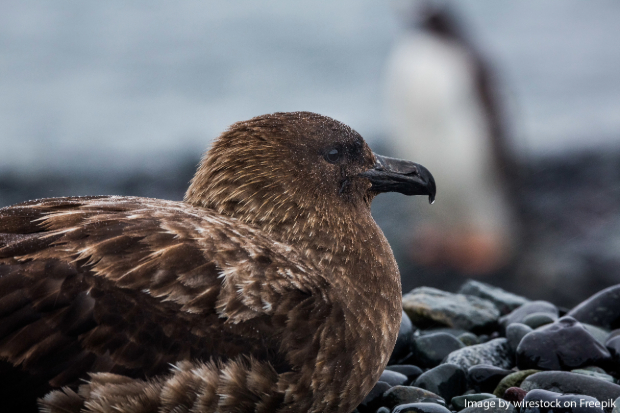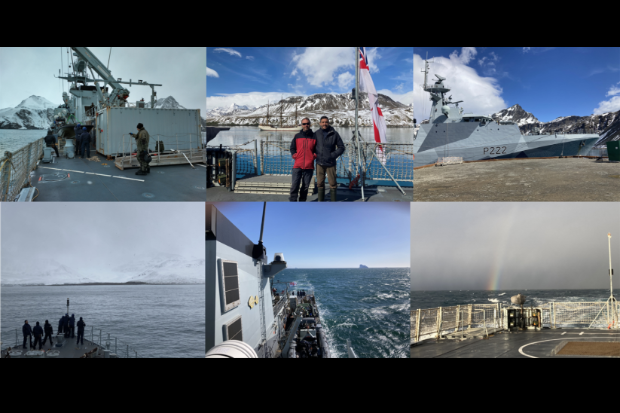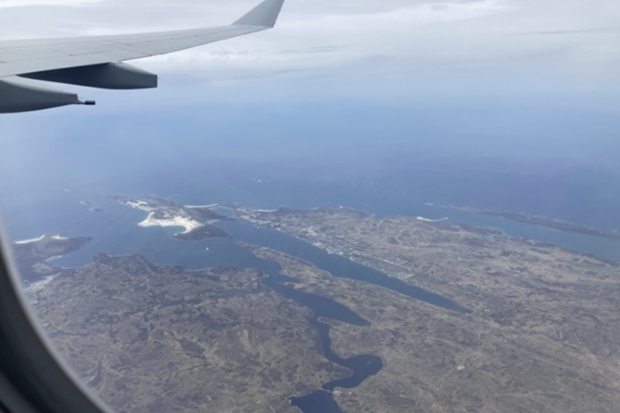
APHA virologist Dr Marco Falchieri embarked on a once-in-a-lifetime journey to South Georgia to test for the presence of High Pathogenicity H5N1 avian influenza virus following mass deaths of avian and seal species. Read on to learn more about his expedition and findings.
As the United Kingdom and the entire Northern Hemisphere grappled with another challenging autumn due to the High Pathogenicity H5N1 avian influenza virus, scientists worldwide turned their attention to the American continent. The virus, having spread from North to South America, had reached its southernmost tip, inflicting heavy tolls on wild bird and pinniped populations (flipper-footed marine animals such as seals).
As the National and International Reference Laboratory for Avian Influenza and Newcastle Disease, APHA is renowned for its expertise in this area and provides support to third countries and overseas territories across all continents. Colleagues in the two British Overseas Territories, the Falkland Islands and South Georgia and the South Sandwich Islands (SGSSI), which form an archipelago (cluster of islands) between the American continent and Antarctica, asked APHA for support and advice after observing Brown Skua (large seabird that breeds in the sub-Antarctic and Antarctic zones) mortalities in South Georgia in early October 2023. Testing conducted at APHA’s headquarters in Weybridge, Surrey revealed, for the first time in history, positive results for HP H5N1 in the sub-Antarctic. Although only a few specimens were tested, reports of mass deaths in other avian species and pinnipeds emerged.

South Georgia, often referred to as the Serengeti of the Antarctic, hosts thriving, and many endangered wildlife populations, including elephant seals, fur seals, penguins, multiple seabirds, and numerous cetaceans (creatures belonging to the whale or dolphin family). Concerns regarding the impact of this deadly virus on these species, as well as signs of viral mammal adaptation, prompted the formation of a task force comprising the Falkland Islands Government, the South Georgia and South Sandwich Islands Government (GSSGSSI), the British Antarctic Survey, and APHA. APHA was tasked with providing laboratory and field services to assist in sample collection and testing.
The journey begins…
With little hesitation, I eagerly volunteered for the mission and soon embarked on an expedition to these 'uncharted territories' at the end of November 2023. Scheduled initially as a 10-day round trip, I gathered sampling materials and acquired appropriate gear for the harsh sub-Antarctic conditions.
Departing from Brize Norton on November 23 at 23:30 aboard a RAF A330 airplane bound for Mount Pleasant in the Falklands, with a short refuelling stop at Ascension Island in the middle of the Atlantic Ocean. After a smooth 23-hour flight, I was welcomed by GSGSSI staff at their fully equipped and comfortable guesthouse in the capital.
Given the absence of flights to South Georgia, my sole means of transportation was by ship, and the Royal Navy thankfully agreed to accommodate me aboard HMS Forth for an escorted tour around the main island.
Although my stay in Stanley was initially intended to last only a few days, unforeseen technical issues and inclement weather extended my temporary stay by a week. Despite initial frustration over the delay and the non-arrival of my sampling kits, the additional time allowed me to immerse myself in the local life of this remote region and explore nearby attractions. The Falklands' landscape, characterized by barren rocky terrain and relentless winds, presented challenges, but the coastline and wildlife were stunning, and some of my best memories are from my excursions to Gypsy Cove, the nearby Gentoo penguin colony, and Cape Pembroke.

Life on HMS Forth
Embarking on HMS Forth on December 1 to depart the following day, it took three days to reach the Willis Islands (western part of the South Georgia archipelago). Navigation involved sailing some of the roughest seas in the world. Luckily, it was not too bad, and although seasickness initially affected me, I adapted quite soon.
Life on HMS Forth was interesting, allowing me to see and, in part, experience normal life in the Royal Navy. Accommodation in the dormitory was basic and sailors were all very friendly and welcoming.

Circumnavigation of the Northern South Georgia Coast and on-land disembarkation
The original plan involved visiting at least five or six sites where mass mortalities had been reported. Unfortunately, this soon appeared to be very overoptimistic as weather, icebergs, and ship technical issues conspired against it. Furthermore, it became clear that we would be unable to return to the Falklands for my return flights, which had to be delayed.
The first time I managed to get on land was on December 6 at King Edward Point, one of two permanent research stations on South Georgia, along with Bird Island. Following two further failed disembarkation attempts at other sites, we had to head back to King Edward Point and its bay to shelter from a snowstorm. On December 9, helped by the British Antarctic Survey and South Georgia Government staff at King Edward Point, we managed to get to Jason Bay, a nearby site in the Western Cumberland Bay, where several Antarctic southern elephant carcasses were found on the beach. Here I managed to collect most samples from sea mammals.

Mission complete and return to the Falklands
After a further aborted attempt to get to Bird Island, due to bad weather and rough seas, we navigated back to the Falklands on December 17 after almost 25 days. Samples were promptly tested by the National Reference Laboratory and International Reference Laboratory team at APHA Weybridge, and we successfully confirmed the presence of the HP H5N1 in pinnipeds and other avian species, marking the first findings of the virus in sea mammals in the Antarctic Region.

An unforgettable adventure
While not an easy journey, I am grateful to my organisation (APHA) and all third-party organisations involved for the opportunity. This has definitely been a once-in-a-lifetime journey, with memories that will last my whole life.


1 comment
Comment by Muna Anjum posted on
Absolutely fascinating to read - very well done Marco for sharing your adventure!